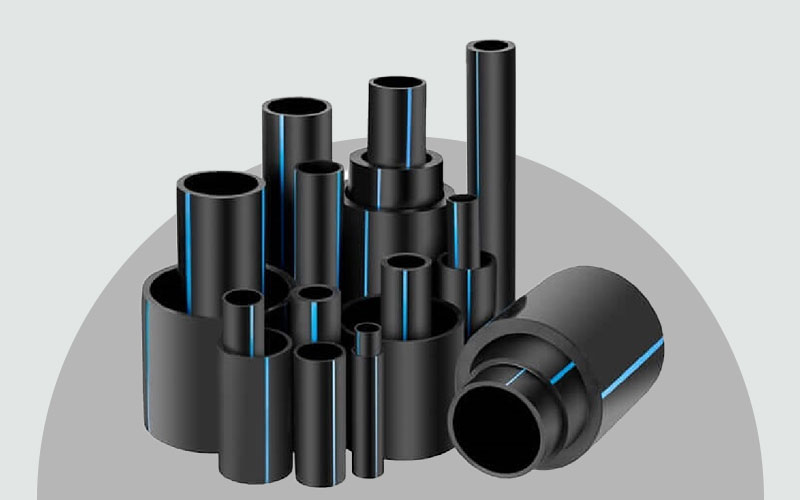A complete guide to polyethylene fittings and their applications.
Polyethylene fittings are a key component in modern piping systems used to transport water, gas, sewage, industrial fluids and even chemicals. These fittings have become the first choice of engineers and technicians in large and small projects due to their high strength, long life, low weight and easy installation.
In this article, we will fully review the types of polyethylene fittings, their advantages, connection methods and applications.
What are polyethylene fittings?
Polyethylene fittings are parts used to connect, branch, change the route or block polyethylene pipes. These fittings are usually made of heavy polyethylene (HDPE) or high-density polyethylene (PE80 and PE100) materials and have high resistance to pressure, corrosion, abrasion and environmental conditions.
Advantages of polyethylene fittings
High resistance to corrosion, rust and chemicals
Long life (more than 50 years under standard conditions)
Light weight and easy transportation
Quick, simple and low-cost installation
Flexibility and impact resistance
Environmentally friendly and hygienic for transporting drinking water
Types of polyethylene fittings in terms of connection method
1. Butt Fusion fittings
In this method, the edges of the fitting and the pipe are simultaneously heated and connected to each other with pressure. This method is very suitable for large-sized and high-pressure pipes.
2. Electrofusion fittings
These fittings have an internal metal coil that, when an electric current passes through, causes the fitting body to be welded to the pipe. This method is very accurate, safe and suitable for gas transmission lines and sensitive projects.
3. Threaded Fittings
Used in light, low-pressure plumbing applications such as garden irrigation or temporary water transfer. Easy to install, no special equipment required.
4. Compression Fittings
Quick installation, no welding or electricity required. Suitable for home use, greenhouses and small projects.
Types of polyethylene fittings based on application
Elbow: To change the direction of the pipeline (usually 45 or 90 degrees)
Tee: To create a branch in the pipeline
Coupling: To connect two pipes directly
Reducer: To connect pipes of different diameters
End Cap: To close the end of the pipe
Flange and flanged connector: To connect to mechanical equipment such as a pump or valve
Applications of polyethylene fittings
Polyethylene fittings are used in a variety of projects, including:
Urban and rural water transfer
Pressurized and drip irrigation systems
Gas supply networks
Drainage and sewage systems
Food and pharmaceutical industries
Transfer of chemical fluids in the petrochemical and mining industries
Conclusion
Polyethylene fittings, due to their unique characteristics, have a special place in various types of Civil, industrial, and agricultural projects have. Choosing the right connection type based on project conditions plays an important role in increasing efficiency, reducing maintenance costs, and extending the life of the piping system.

